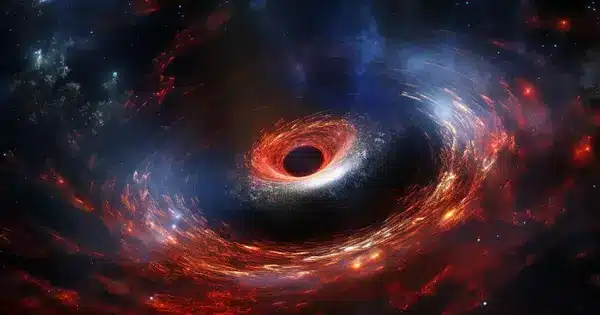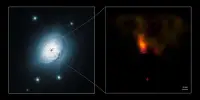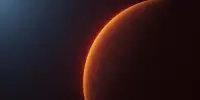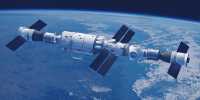Using the James Webb Space Telescope (JWST), researchers detected the most distant active supermassive black hole observed to date. CEERS 1019 is a galaxy that existed about 570 million years after the Big Bang, and its black hole is less massive than any other in the early cosmos that has been discovered.
In addition to the black hole in CEERS 1019, the researchers discovered two smaller black holes that occurred 1 billion and 1.1 billion years after the great bang. JWST also discovered eleven galaxies that existed between 470 million and 675 million years ago. JWST’s Cosmic Evolution Early Release Science (CEERS) Survey, led by Steven Finkelstein, an astronomy professor at The University of Texas at Austin, produced the evidence. The program combines JWST’s very detailed near- and mid-infrared pictures and spectra data, which were all needed to achieve these discoveries.
“Looking at this distant object with this telescope is a lot like looking at data from black holes that exist in galaxies near our own,” said Rebecca Larson, a recent Ph.D. graduate at UT Austin, who led the study. “There are so many spectral lines to analyze!”
Until now, research about objects in the early universe was largely theoretical. With Webb, not only can we see black holes and galaxies at extreme distances, we can now start to accurately measure them. That’s the tremendous power of this telescope.
Jeyhan Kartaltepe
These findings have been published in multiple preliminary papers in a special edition of The Astrophysical Journal Letters. CEERS 1019 is unique not only for how long it has lived, but also for how light its black hole is. It has a mass of roughly 9 million solar masses, which is significantly less than previous black holes discovered in the early universe by other telescopes. These behemoths often have more than a billion times the mass of the sun – and they are simpler to spot since they are much brighter. The black hole within CEERS 1019 is 4.6 million times the mass of the sun, similar to the black hole at the heart of our Milky Way galaxy.
This black hole, however smaller, existed so much earlier that it is still difficult to explain how it formed so soon after the universe began. Smaller black holes must have existed earlier in the universe, but it wasn’t until JWST began watching that researchers were able to make unambiguous detections.
The scientists could not only distinguish which emissions in the spectrum are from the black hole and which are from its host galaxy, but they could also determine how much gas the black hole is consuming and the pace at which stars form in its host galaxy.
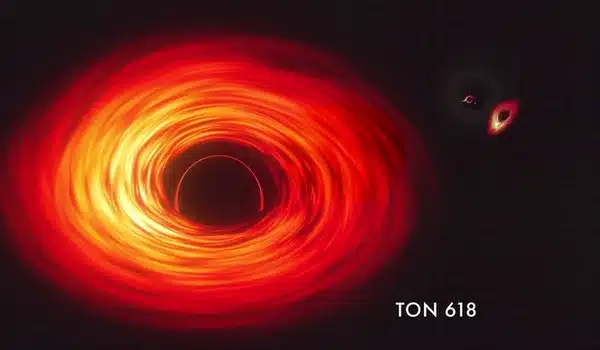
The researchers discovered that this galaxy is consuming as much gas as it can while also producing new stars. They looked to the photographs to figure out why this was happening. CEERS 1019 looks as three brilliant clusters rather than a single circular disk.
“We’re not used to seeing so much structure in images at these distances,” said Jeyhan Kartaltepe, an associate professor of astronomy at Rochester Institute of Technology in New York and a member of the CEERS team. “A galaxy merger could contribute to the activity in this galaxy’s black hole, which could lead to increased star formation.”
These are just the initial ground-breaking results of the CEERS Survey.
“Until now, research about objects in the early universe was largely theoretical,” Finkelstein said. “With Webb, not only can we see black holes and galaxies at extreme distances, we can now start to accurately measure them. That’s the tremendous power of this telescope.”
In the future, it’s possible JWST’s data may also be used to explain how early black holes formed, revising researchers’ models of how black holes grew and evolved in the first several hundred million years of the universe’s history.
The James Webb Space Telescope is an international program led by NASA with its partners, the European Space Agency and the Canadian Space Agency.
More Extremely Distant Black Holes and Galaxies
The CEERS Survey is extensive, with much more to discover. Dale Kocevski of Colby College in Waterville, Maine, and his colleagues rapidly identified another pair of little black holes in the data. The first, in galaxy CEERS 2782, was the easiest to identify. Because there is no dust in the way of JWST’s vision of it, researchers were able to calculate when its black hole existed in the history of the universe – barely 1.1 billion years after the Big Bang. The second black hole existed slightly earlier, 1 billion years after the great bang, in galaxy CEERS 746. Its dazzling accretion disk, a ring of gas and dust that surrounds its supermassive black hole, is still partially obscured by dust.
“The central black hole is visible, but the presence of dust suggests it might lie within a galaxy that is also furiously pumping out stars,” Kocevski explained.
The two additional recently identified black holes (in galaxies CEERS 2782 and CEERS 746), like the one in CEERS 1019, are “lightweights” when compared to previously known supermassive black holes at this distances. They have a mass of only around 10 million times that of the sun.
“Researchers have long suspected that lower mass black holes existed in the early universe. Webb is the first observatory that can clearly capture them,” Kocevski stated. “We now believe that lower mass black holes are all over the place, just waiting to be discovered.”
All three black holes were too faint to be discovered before JWST.
“With other telescopes, these targets look like ordinary star-forming galaxies, not active supermassive black holes,” Finkelstein added.
The exquisite spectra of the JWST also enabled these researchers to calculate precise distances to, and thus ages of, galaxies in the early universe. Pablo Arrabal Haro of the National Science Foundation’s NOIRLab and Seiji Fujimoto, a UT Austin postdoctoral researcher and Hubble fellow, uncovered 11 galaxies that existed between 470 million and 675 million years after the Big Bang. Not only are they exceedingly distant, but the discovery of so many brilliant galaxies is noteworthy. Theoretically, JWST would find fewer galaxies than are now detected at these distances.
These galaxies are actively generating stars, although they are not as chemically loaded as galaxies considerably closer to us.
“Webb was the first to detect some of these galaxies,” Fujimoto explained. “This set, along with other distant galaxies we may discover in the future,” he adds, “may change our understanding of star formation and galaxy evolution throughout cosmic history.”
